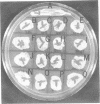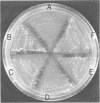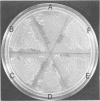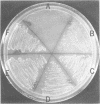Abstract
Studies of 31 strains of Moraxella urethralis have shown that 20 of them are competent for genetic transformation. This finding has led to the development of transformation assays for identification of newly isolated strains of this organism. Crude deoxyribonucleic acid (DNA) samples from all strains of M. urethralis readily transform auxotrophic mutants of competent strains to prototrophy, whereas DNA samples from unrelated bacteria such as Acinetobacter, Moraxella, and Neisseria species uniformly fail to elicit positive transformation of mutant tester strains. One of the competent strains of M. urethralis investigated is a naturally occurring mutant defective in its ability to utilize citrate as a carbon and energy source. DNA samples from 29 of the 30 remaining strains of utilization; the one nonreacting strain is citrate negative and probably possesses the same genetic lesion as the citrate-negative mutant. Three organisms originally identified as strains of M. urethralis, because of their phenotypic properties, are probably incorrectly designated, since DNA samples from these strains failed to transform any of the tester mutant strains used in the present study. The transformation assay for M. urethralis is very simple and can be performed readily in a clinical laboratory. The entire procedure can be carried out in less than 24 h.
Full text
PDF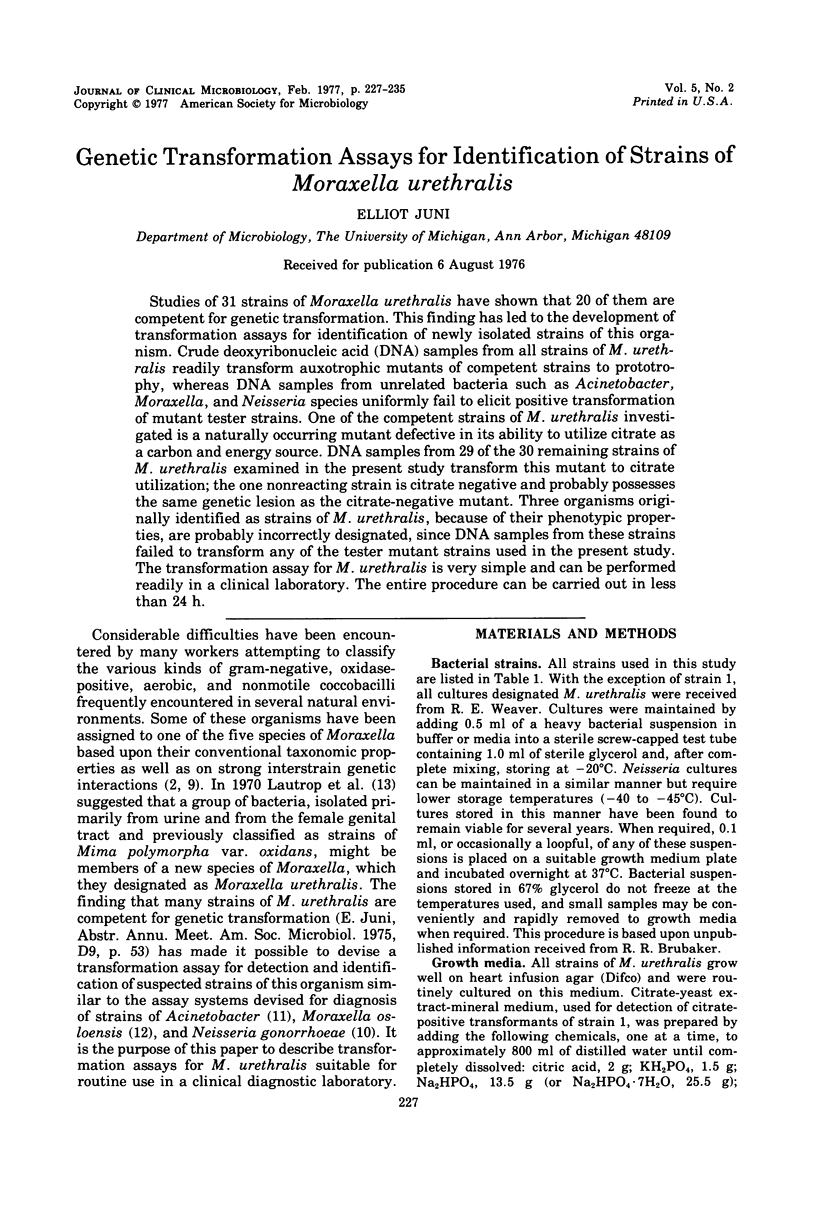

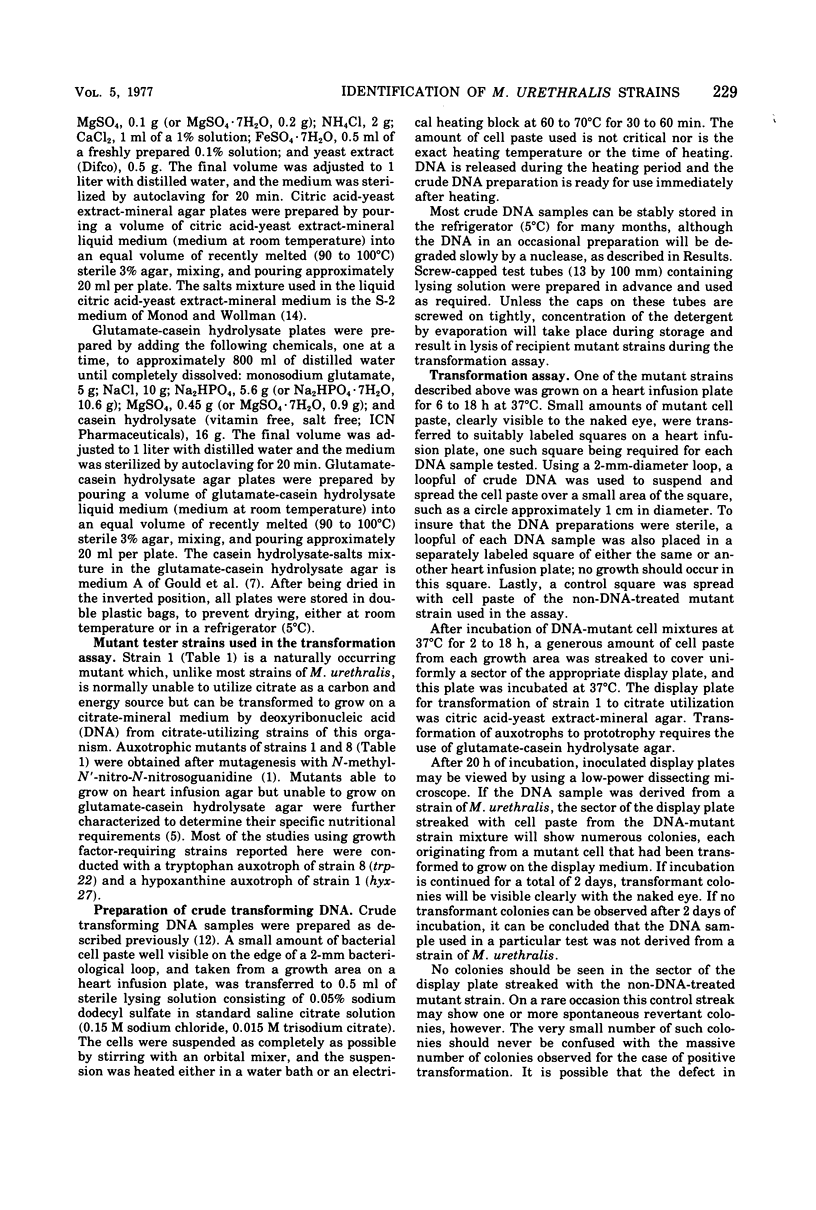
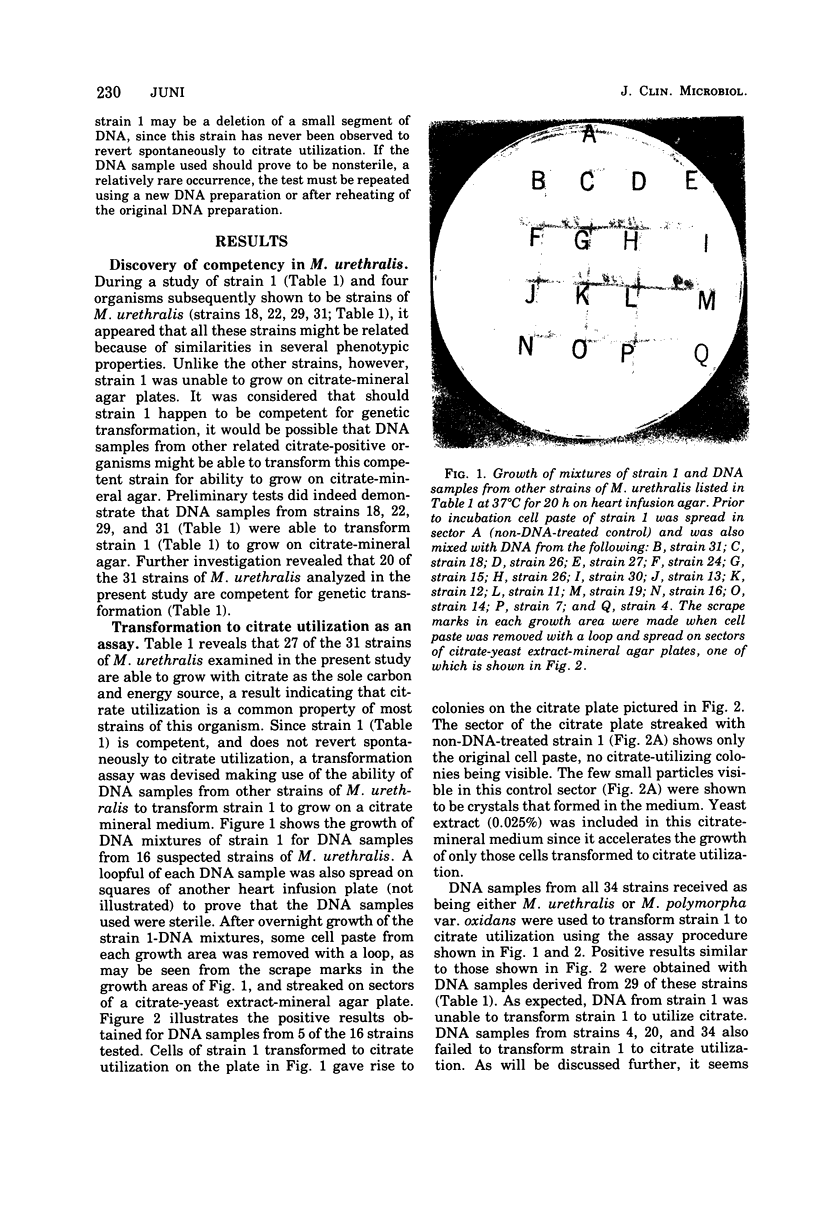
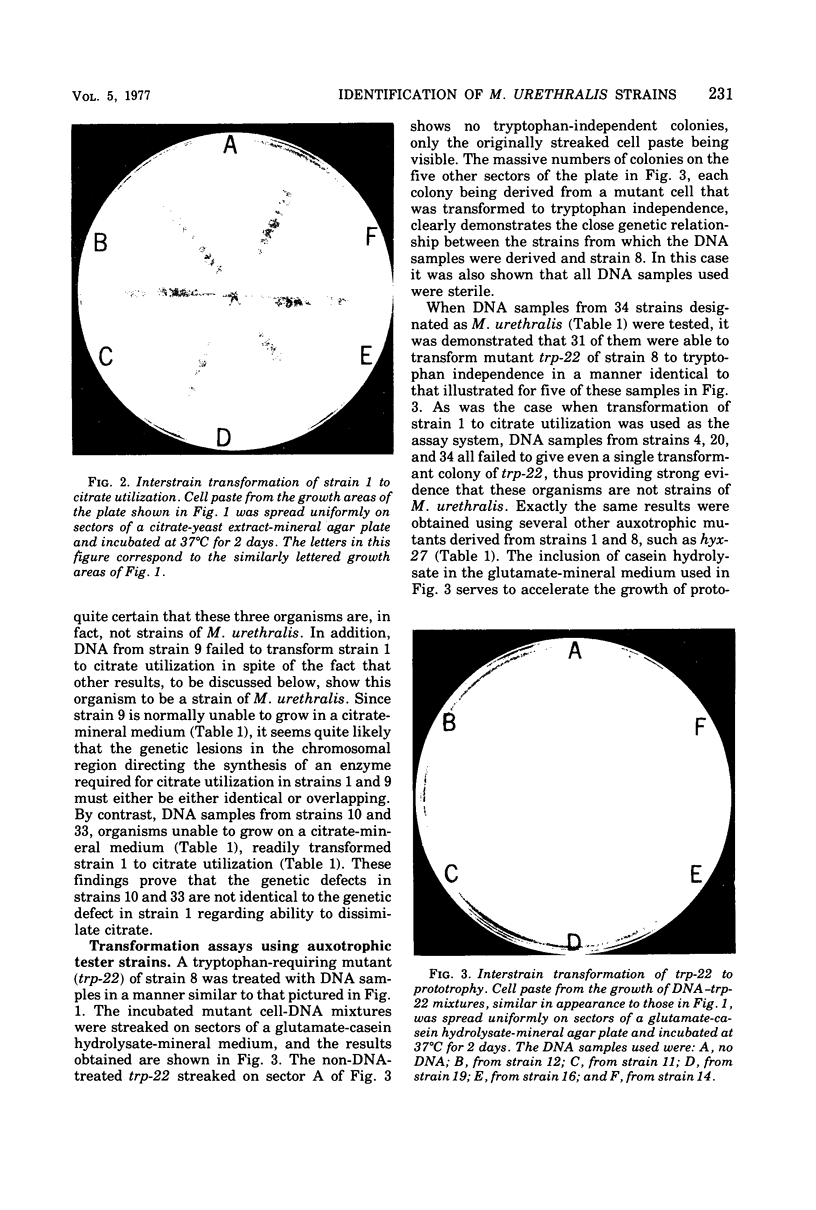
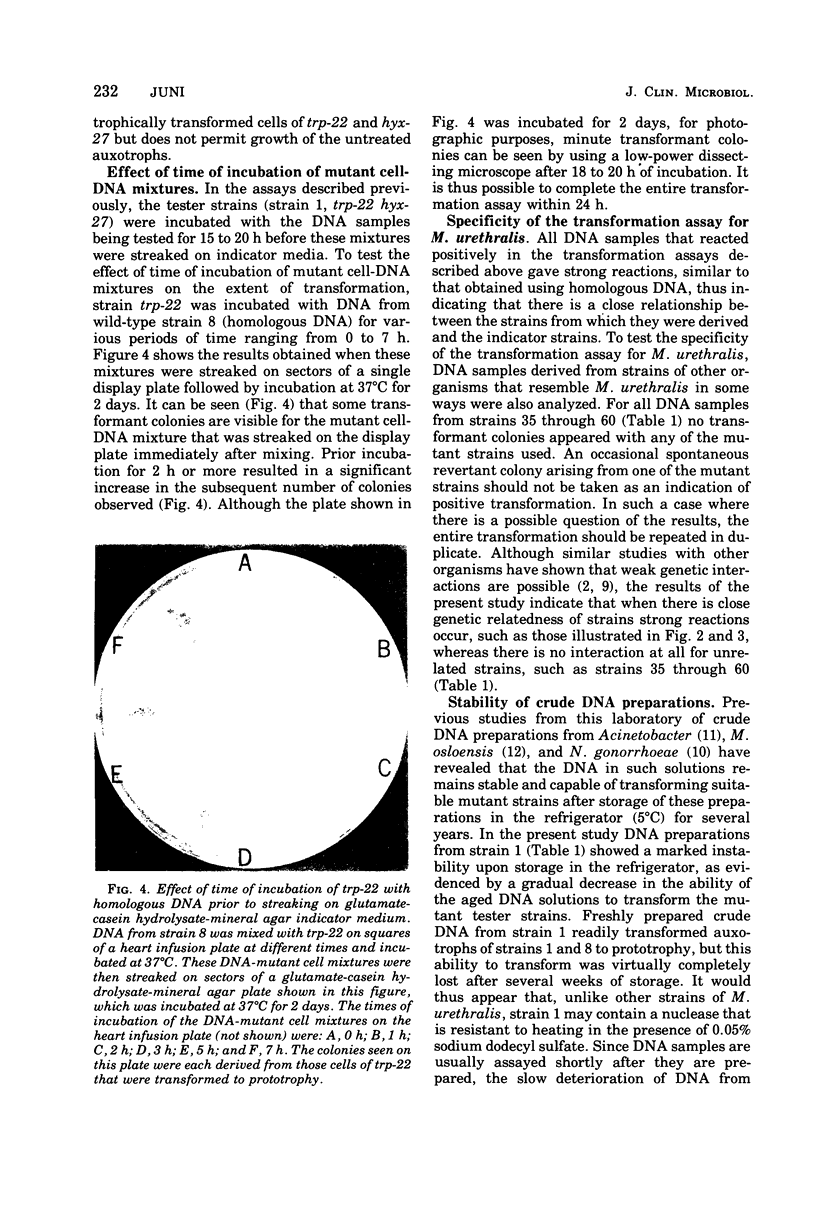
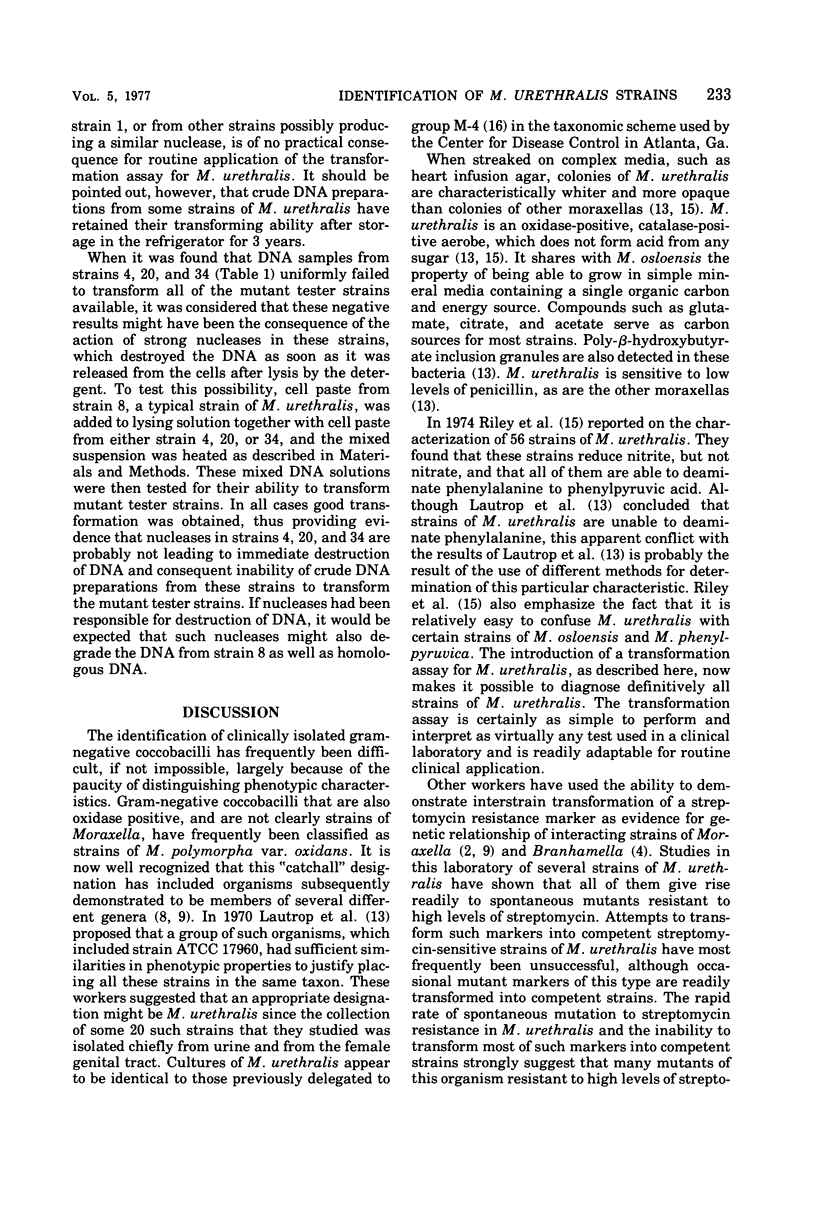
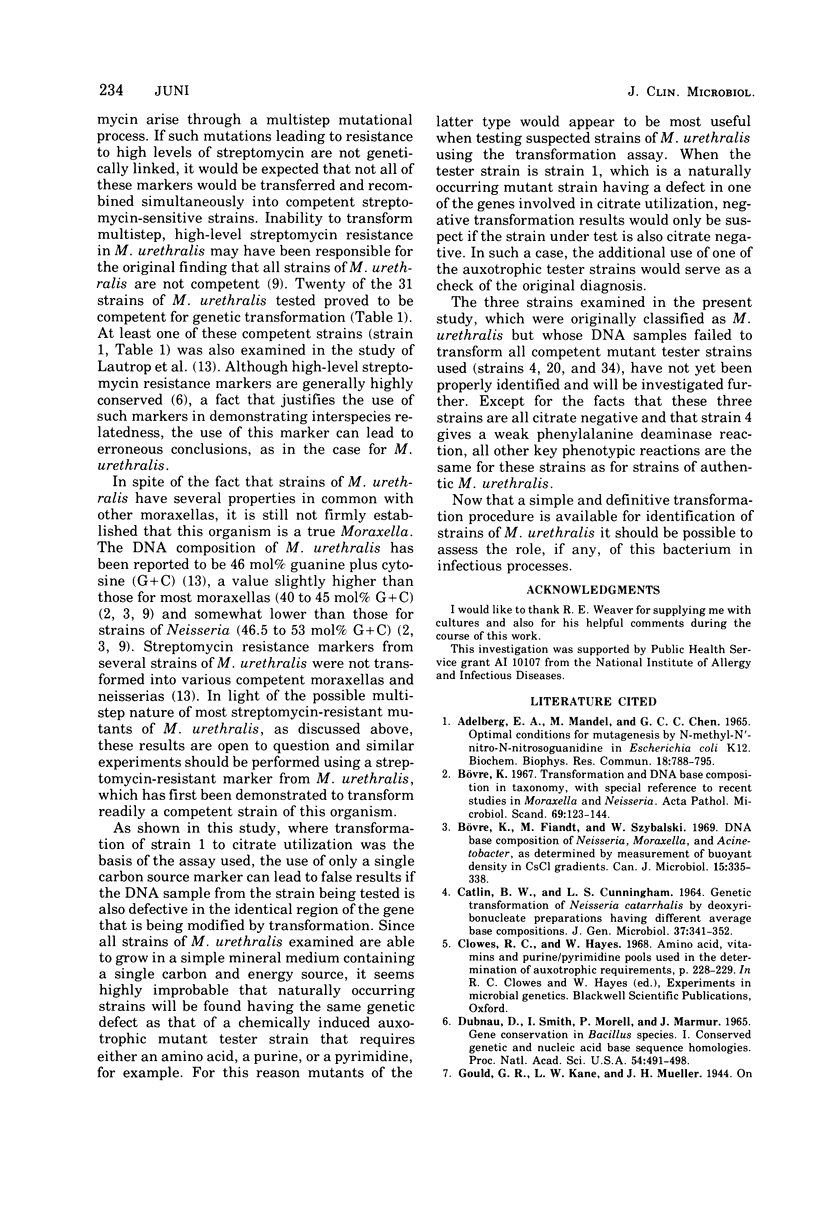
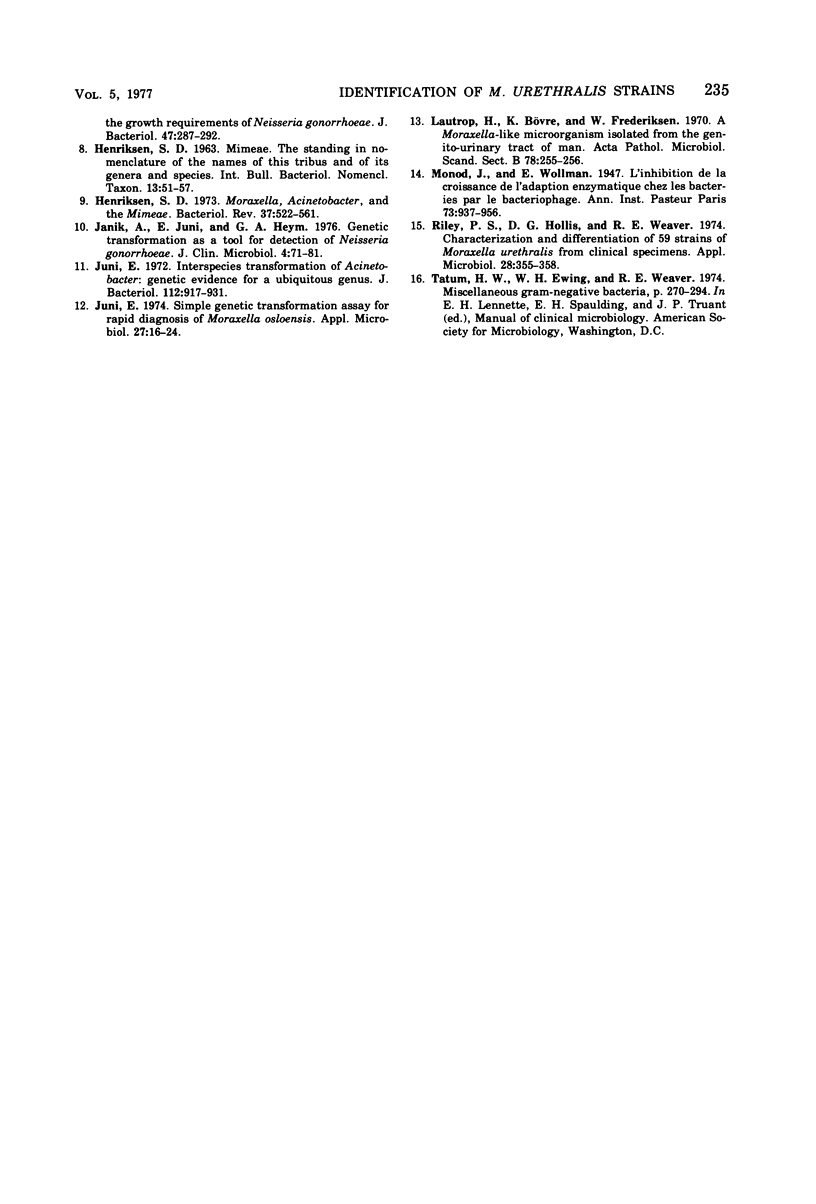
Images in this article
Selected References
These references are in PubMed. This may not be the complete list of references from this article.
- Bovre K., Fiandt M., Szybalski W. DNA base composition of Neisseria, Moraxella, and Acinetobacter, as determined by measurement of buoyant density in CsCl gradients. Can J Microbiol. 1969 Apr;15(4):335–338. doi: 10.1139/m69-062. [DOI] [PubMed] [Google Scholar]
- CATLIN B. W., CUNNINGHAM L. S. GENETIC TRANSFORMATION OF NEISSERIA CATARRHALIS BY DEOXYRIBONUCLEATE PREPARATIONS HAVING DIFFERENT AVERAGE BASE COMPOSITIONS. J Gen Microbiol. 1964 Dec;37:341–352. doi: 10.1099/00221287-37-3-341. [DOI] [PubMed] [Google Scholar]
- Dubnau D., Smith I., Morell P., Marmur J. Gene conservation in Bacillus species. I. Conserved genetic and nucleic acid base sequence homologies. Proc Natl Acad Sci U S A. 1965 Aug;54(2):491–498. doi: 10.1073/pnas.54.2.491. [DOI] [PMC free article] [PubMed] [Google Scholar]
- Gould R. G., Kane L. W., Mueller J. H. On the Growth Requirements of Neisseria Gonorrhoeae. J Bacteriol. 1944 Mar;47(3):287–292. doi: 10.1128/jb.47.3.287-292.1944. [DOI] [PMC free article] [PubMed] [Google Scholar]
- Henriksen S. D. Moraxella, Acinetobacter, and the Mimeae. Bacteriol Rev. 1973 Dec;37(4):522–561. doi: 10.1128/br.37.4.522-561.1973. [DOI] [PMC free article] [PubMed] [Google Scholar]
- Janik A., Juni E., Heym G. A. Genetic Transformation as a tool for detection of Neisseria gonorrhoeae. J Clin Microbiol. 1976 Jul;4(1):71–81. doi: 10.1128/jcm.4.1.71-81.1976. [DOI] [PMC free article] [PubMed] [Google Scholar]
- Juni E. Interspecies transformation of Acinetobacter: genetic evidence for a ubiquitous genus. J Bacteriol. 1972 Nov;112(2):917–931. doi: 10.1128/jb.112.2.917-931.1972. [DOI] [PMC free article] [PubMed] [Google Scholar]
- Juni E. Simple genetic transformation assay for rapid diagnosis of Moraxella osloensis. Appl Microbiol. 1974 Jan;27(1):16–24. doi: 10.1128/am.27.1.16-24.1974. [DOI] [PMC free article] [PubMed] [Google Scholar]
- Lautrop H., Bovre K., Frederiksen W. A Moraxella-like microorganism isolated from the genito-urinary tract of man. Acta Pathol Microbiol Scand B Microbiol Immunol. 1970;78(2):255–256. doi: 10.1111/j.1699-0463.1970.tb04296.x. [DOI] [PubMed] [Google Scholar]
- Riley P. S., Hollis D. G., Weaver R. E. Characterization and differentiation of 59 strains of Moraxella urethralis from clinical specimens. Appl Microbiol. 1974 Sep;28(3):355–358. doi: 10.1128/am.28.3.355-358.1974. [DOI] [PMC free article] [PubMed] [Google Scholar]



